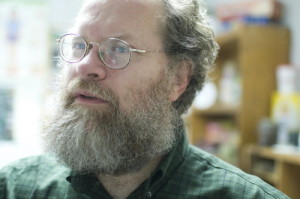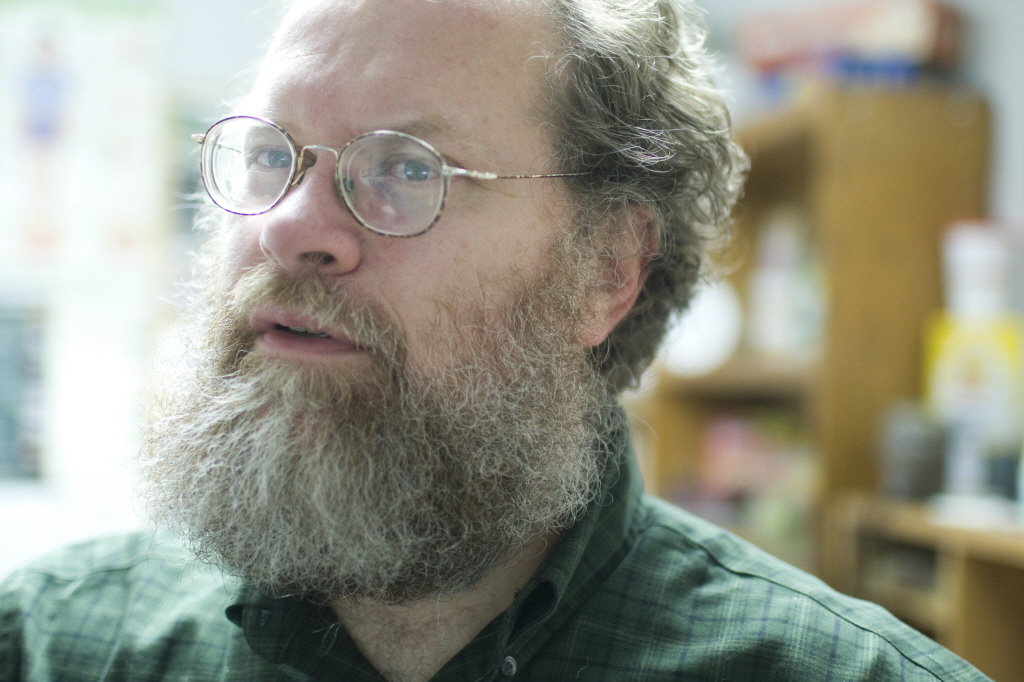I still miss Bill.
 I never really knew him, but we all have our demons.
I never really knew him, but we all have our demons.
Everyone has problems, especially the ones who think they don’t.
He was awkward in a way I found familiar
Thing is, Bill could nail an outbreak in a heartbeat.
Emily Smith of Atlas Obscura writes about the home-canned beets killed someone. The freezer-aisle pot pies (there’s about 50 in Phebus’ freezer from 2007). The cheese, breakfast cereal, frozen pizza, tampons, tattoo ink and plastic bags have victims of their own.
These are a handful of the exhibits on display at the International Outbreak Museum in Portland, Oregon, which curators say is the world’s only museum of its kind. It features objects collected from outbreaks of infectious diseases that took place in Oregon and around the globe.
The museum is a single windowless room in a state office building that’s home to the Oregon Health Authority. This room was once the office of Bill Keene, an internationally respected disease investigator for the State of Oregon who assisted on cases around the world. He officially began collecting the mementos for a museum in 1993, though he started holding onto items a decade or more earlier. After his unexpected death in 2013, his colleagues have continued his efforts.
The small room is crammed with more than 100 exhibits that fill tall glass-encased cabinets and cover every surface. The beets and the box of Rely tampons are authentic. Others, like the papier-mache cantaloupes in a net that hangs from the ceiling, are carefully handcrafted representations.
Not every item in the collection represents a fatal outbreak. But every item hints at ailment: stomach cramps, fevers, chills, rashes—the often-agonizing symptoms that accompany an outbreak. And each exhibit hints at investigators’ quiet, crucial work to unravel the mystery of their cause.
On a shelf along the back wall, some tarot cards and mugs bearing the image of cult leader Bhagwan Shree Rajneesh mark a dark chapter for disease detectives, when a cult in rural Antelope, Oregon, perpetrated the largest bioterrorism attack in U.S. history. The goal was to suppress voter turnout in Wasco County, ensuring that cult members, known as Rajneeshees, could overtake locals in the November 1984 elections. They slipped liquid tainted with salmonella into salad-bar offerings at 10 restaurants and several other public places. The attack sickened 751 people, who ranged in age from newborn to 87.
The plastic milk jugs contained in a red plastic crate recall a yearlong case that stumped investigators as they pondered 25 cases of salmonella spread across Oregon, over the course of 12 months, with no clear link. The only detail the cases had in common was milk, which perplexed investigators because the milk was pasteurized. However, a trip to a beloved local dairy in Roseburg, southern Oregon revealed that while the milk itself was fine, a crate-washing machine at the facility was contaminated with salmonella bacteria. So, as crates of milk cartons moved through the facility, they were doused with a salmonella-infused solution. A thorough cleaning of the facility ended the yearlong outbreak.
The Outbreak Museum’s peanut-laced products including granola bars, cookies, and crackers serve as a reminder of Stewart Parnell, a corporate peanut peddler who was sentenced to 28 years in prison for knowingly selling contaminated products. Parnell, the CEO of the Peanut Corporation of America, famously wrote in an email, “Just ship it,” when he learned a shipment had been delayed pending salmonella testing. The shipped peanut-butter paste was linked to a 2008 outbreak that killed nine people and sickened more than 700 others.
In isolation, the stuff that fills this one-room museum is the same ordinary stuff that fills trash and recycling bins. It’s waxy paper boxes printed with company slogans and plastic wrappers bearing logos and nutrition facts. In some cases it’s convincing reproductions of raw meat you’d find shrink-wrapped and refrigerated in the grocery store or fresh strawberries you’d buy from a farmer’s market.
But in Bill Keene’s world, each exhibit stands for a smoking gun. This museum is the evidence of real, everyday items that harmed or killed—and that could have gone on to hurt more, if not for the scientists who solved these mysteries. Even before it was a museum, this room was a place where other investigators drew inspiration.
“You could come in here when you needed a break from your work, sit here and ask him about anything,” epidemiologist Tasha Poissant says.
Keene wanted this museum to commemorate the successes, remember the failures and demonstrate the importance of this work, Poissant says. He understood that outbreaks affect people’s lives in intimate and powerful ways, which means they also have the power to educate, to influence public opinion and change policy.
“When Bill passed away, we all wondered what are we going to do with this museum?” epidemiologist Hillary Booth says. “He didn’t get a chance to make it into the proper museum he wanted to.”
So his colleagues and family stepped in to bring some order to the collection he’d amassed. They installed the display cabinets in his office and catalogued exhibits on the museum website. They continue to collect artifacts, from their own work as well as from cases around the world. While the museum isn’t open to the general public, the curators show it off whenever the opportunity arises—when a public health conference comes to town or guests visit the office.
Memorabilia from Keene’s work spills out of the museum and covers the walls leading to its door. Newspaper clippings, photos from his field work and quotes from Keene (Keene-isms) decorate the cubicle walls just outside.
“Your diarrhea is our bread and butter,” one quote reads.
Poissant offers a correction: What Keene actually said was, “Your vomit and diarrhea is our bread and butter.”
Either way, Keene’s words capture a genuine passion for this line of work that in some cases saves lives but almost always remains invisible.



 but their demographic similarity sent up red flags, indicating a possible wider outbreak.
but their demographic similarity sent up red flags, indicating a possible wider outbreak.  Seattle had attended a wedding in Tonasket, Wash., just south of Oroville. The wedding featured local cheese — probably from Sally Jackson.
Seattle had attended a wedding in Tonasket, Wash., just south of Oroville. The wedding featured local cheese — probably from Sally Jackson.